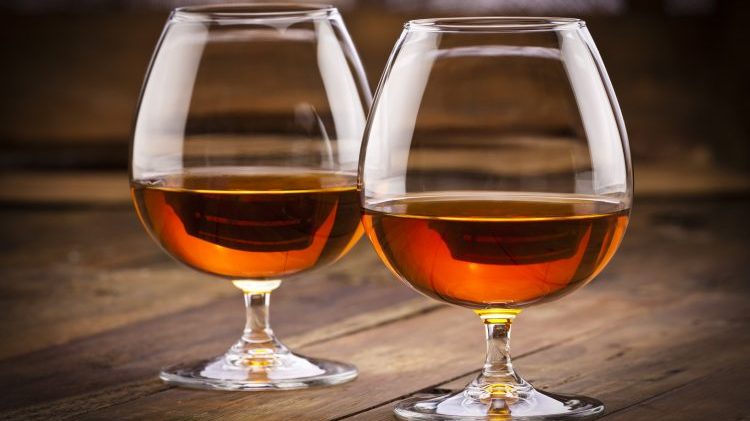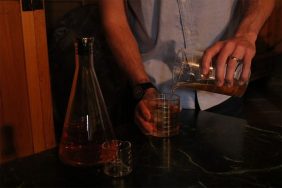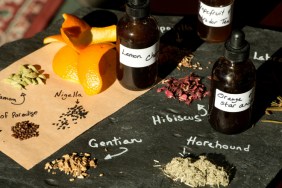Photo: fcafotodigital (Getty Images)
Many people think they don’t like cognac. A good portion of these cognac haters have never even tried the French aged brandy. It’s like deciding you don’t like broccoli even though you’ve never tasted it. Maybe if you gave it a chance, you’d actually enjoy the strange, green vegetable. Perhaps you’d also enjoy cognac in a nice cocktail like the Sazerac before you venture into straight sipping territory. Either way, life is full of choices and experiences. Why would you want to limit yourself by deciding you don’t like something you’ve never tried?
All that said, you probably have a lot of questions about cognac. We have answers.
What is cognac?
In the most basic terms, cognac is an aged brandy made from grapes in a specific area of France. Like many other global spirits, there are specific rules required to make cognac. “It is double distilled from white wine in copper pot stills and aged for no less than two years in French oak,” says Kellie Thorn, cognac educator and beverage director at Hugh Acheson restaurants.
The most common grape used to make cognac is the Ugni Blanc grape. “Like many other French-made agricultural products, cognac production falls under an AOC [Appellation d’Origine Contrôlée], essentially a ‘protected designation of origin,’ so not only must it come from the region of Cognac, there are also specific regulations regarding when it can be produced and how long it must be aged before bottling, just to name a few,” says Adam Robinson, cognac educator and owner of Deadshot in Portland, Oregon.
Summer Suds: Bartender’s Favorite Beach Beers
“With agings from young to old, cognacs represent a broad spectrum of flavors that are great to sip neat or to mix in a cocktail. It has a long history as one of the most influential alcoholic beverages,” says H. Joseph Ehrmann, cognac educator and proprietor of Elixir, Elixir To Go, and Cocktail Ambassadors.
In recent years, along with any other spirits, cognac is on the rise. “Various audiences find it appealing for a broad range of reasons, including its delicious range of inherent flavors, unique ability to pair with food, adaptability within cocktails and mixology, and the cultural significance of numerous brands.”
Why are some people afraid to try cognac?
One of the main reasons people are unwilling or afraid to try cognac is because of some of the legends and misconceptions surrounding it. When some people think about the spirit, they imagine suit-wearing businessmen smoking cigars in large, high-backed chairs. “Many people think it is overly expensive and narrowly defined,” says Ehrmann. “It has suffered from an identity crisis in that older generations (internationally) held it in the highest regard as a super-premium product, making it basically inaccessible to most, or at least creating the idea that it was only accessible by the affluent.”
Another problem is the fear of the unknown.” It’s been out of our drinking and cocktail consciousness for so long that people aren’t sure what to do with it outside of swirl it in a large snifter at the end of a meal,” says Thorn.
Bartender’s Choice: Mixologists Share Their Favorite Highball Recipes
How is cognac similar to other spirits?
A well-made aged rum is similar in its diversity to cognac. “A funky, aromatic Jamaican rum is comparable to a rancio-driven cognac VSOP or XO that’s aged in a wet cellar,” says Ehrmann. “A balanced, blended Barbados rum is comparable to a cognac VSOP made from a blend of ‘eau de vies’ from the five different crus of the Cognac region. And a finessed, old ‘rhum agricole’ from Martinique can exhibit similar of the nuances of a cognac XO from Grand Champagne.”
Bourbon is bold on the caramel and vanilla from being aged in charred American oak. “Though cognac is aged in French oak, it still exhibits many similar notes of vanilla, cocoa, toffee and cream,” says Ehrmann. “A cognac VS or VSOP mixed into an old fashioned would make bourbon drinkers swoon.”
Lagers are light and refreshing. They are similar to some cognac expressions from Grand Champagne and Petite Champagne. “With their delicate grapes, and when mixed in a highball with some crisp soda water, the spirit opens up creating a similar flavor profile to beer,” says Ehrmann.
Will bourbon drinkers like cognac?
Cognac is a barrel-aged spirit, so a lot of flavors familiar to bourbon drinkers such as vanilla, baking spice, toasted coconut, toffee, and caramel can be found in the spirit. This is especially true in a cognac VSOP. “These expressions tend to often really express these characteristics,” says Thorn. “With the current climate of whiskey, it is becoming increasingly difficult to get a straight answer about how old the spirit is and we are seeing younger and younger releases that carry a pretty hefty price tag. The ‘eau de vie’ in a cognac VSOP have a minimum aging requirement of four years, and often a much older ‘eau de vie’ will be present in the blend, which I think should make the consumer feel confident in their spending choices as well.”
Ask The Pros: Bartenders’ Least Favorite Drinks To Make
How can novices get into the spirit?
Cocktails are the best way to introduce someone unfamiliar with any spirit, and especially with cognac. “If someone normally drinks Manhattans, they should try a Harvard (cognac Manhattan),” says Robinson. “A great stand in for a whiskey spur, aged rum daiquiri or gin sour is a French 75 made with cognac which was the original spirit used for this cocktail.”
Or, you can get started with a cognac highball. “Try a cognac & tonic or cognac & ginger ale,” says Franky Marshall, a cognac educator and bartender in New York.
Always taste the spirit neat first so you can really focus on the flavor and find complimentary elements for mixing and pairing. “Then the fun begins: start experimenting! Maybe try a cocktail like a French 75 or a cognac julep,” says Marshall. Of course, you can sip cognac neat or pair it with food. “I’d say dessert is the easiest place for novices to start as either VS, VSOP, or XO expressions are a great match for a number of sweets. From tarte tatin to ice cream to matcha muffins, you’re covered.”
Mix it like you would anything else and try drinking it with food, neat. “Put it in your coffee. Drink it with a good bar of chocolate. When drinking it neat, take small sips that coat your mouth and let them linger,” says Ehrmann. “It will go on and on. After you’ve finished a glass, sniff the glass itself on and off for a half an hour. Notice how long it lasts ad enjoy the aromas.” All in all, just enjoy it at your own pace.







